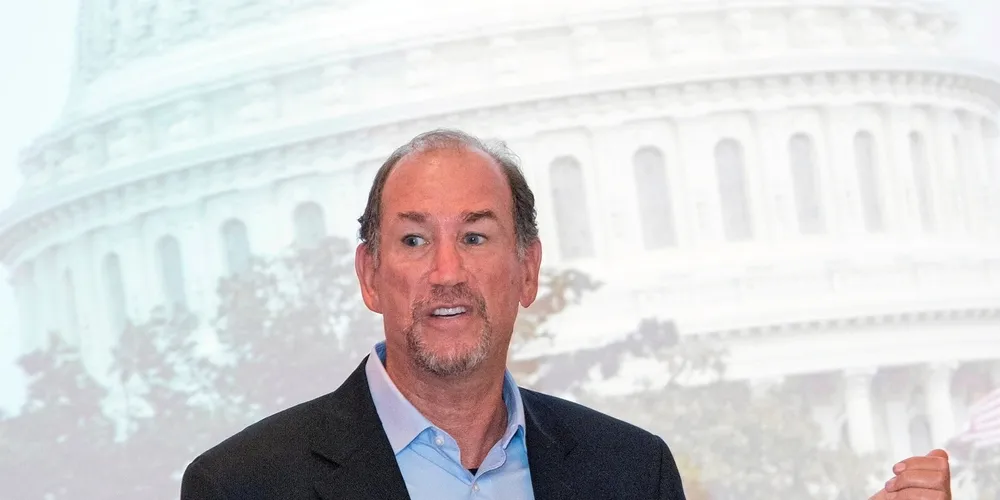'No turning back the clock': US green groups say year-old IRA sinking 'red' roots
The Inflation Reduction Act has spurred billions in investment into US clean energy with benefits accruing across political divides, industry leaders say on first anniversary

Greg Wetstone, CEO of American Council on Renewable Energy (Acore), minced no words when discussing landmark climate change legislation that passed last year aimed at spurring the US energy transition.
The IRA is one of the world’s largest efforts in spurring the development of renewable energy. The law channels some $369bn in incentives to clean energy development, mostly through investment (ITC) and production (PTC) tax credits.
Renewable energy industry associations have celebrated the anniversary with multiple reports indicating that the law has already had a massive impact on not only clean power generation but also manufacturing.
The Solar Energy Industries Association (SEIA) released an analysis 14 August that found that $100bn was invested in solar and energy storage capacity, including in 51 manufacturing facilities with 155GW of capacity.
“We can say with some confidence the law is working to accelerate the nation's energy transition, spur economic growth, and long-term renaissance in American manufacturing,” said Wetstone.
Headlines have focused on big deals announced by global conglomerates, but critical to the success of the law is the opportunities for middle- and working-class Americans to leverage incentives to lower their power bills and raise their standards of living.
The 30% ITC offered comes with adders for investment into “energy communities” – areas of the US blighted by fossil fuel production and power generation – as well as for domestic content and for hiring union workers at prevailing wages.
“Linking the incentives with policy outcomes means that there will be a much greater likelihood that the investments are going to be built and the money spent in areas that perhaps in the past have not seen the benefits of this kind of investment,” said Abigail Ross Hopper, CEO of SEIA.
The legislation includes ITC for consumers to install residential solar panels and for electric vehicles and chargers.
These are “tremendous economic opportunities for consumers that’s coming through, thanks to the IRA,” said Heather O’Neill, chief of Advanced Energy United.
ACP head Jason Grumet noted that the US will need at least one million new workers in clean energy over the next decade, “the best problem we could possibly have,” he said.
Amid an uncertain American political landscape, employment and consumer benefits might be key to the law’s survival, too.
Non-partisan benefits
The law was passed on strictly partisan lines by a Democrat-controlled Congress, with not a single Republican vote, making it vulnerable to changing political tides.
The lower House of Representatives passed into Republican control last fall and has already put the law’s provisions in play for budget negotiations.
Grumet, formerly with the Washington, DC-based think tank Bipartisan Policy Centre, said those negotiations weren’t welcomed by congressional representatives of districts that have directly benefitted from the law.
ACP found that 80% of new renewable generation and 60% of new manufacturing investment has gone to districts led by Republicans.
“We're there already a point where it's a very difficult political place to be to say, oh, I want to turn back the clock here and close down this new manufacturing facility in my district,” he said.
“I don't think it's going to happen,” he added, noting that Democrats were more than happy to accept sweetened tax refunds by the previous Trump administration, and that repeated efforts by Republicans to kill former President Barack Obama’s Affordable Care Act failed.
“This legislation is well entrenched, and we should do everything we can to provide the reassurance that it's here for the long term,” he said.
Much work remains to be done, and legislation aimed at streamlining permitting and enhancing transmission remain on the table, with little prospect of imminent passage.
Politically, organised opposition to renewable energy development also seems on the rise.
“Without a doubt, the opposition on the siting front is growing and it's growing quickly, and I would suggest that it is very organised and very strategic and not growing organically,” said SEIA’s Hopper.
Nevertheless, industry advocates are confident that through the IRA, the US energy transition is well underway.
If “we hold a fair competition based on economics, energy security and climate change, clean power is going to win,” ACP's Grumet said.
“We're going to win on the merits and we're going to win in a collaborative environment,” he added.
(Copyright)